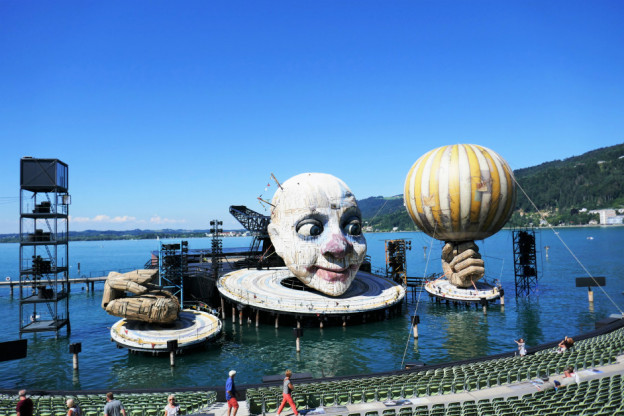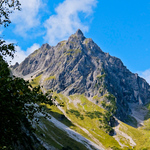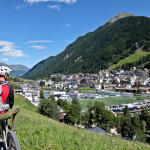In Amy McPherson’s Guide to Bregenzerwald she is in love with the Austrian city. From opera on an extravagant floating stage to cycle touring through the green hills and mountain villages beyond.
As the sun sets behind the horizon casting an amber glow across the giant wooden head of Rigoletto, while a real-life Rigoletto was running across the air with a balloon, I sit among the silence of 7,000 people in awe, transfixed by this spectacular sight, especially when the theatrical elements of the stage extends beyond the limits of artificial craft, blending into the lake, the hills and the towns that surround it. Unmissable for any guide to Bregenzerwald.
The annual Bregenz Festival, a long-standing music festival that has been held yearly since 1946, celebrated its 75th year back in 2020, but the pandemic placed a halt on the festivities until this year. Originally set up to boost post-war morale, the town’s creatives made a floating stage from two barges moored on the water, where other creatives performed theatre, music and whatever they could think of to entertain the population.
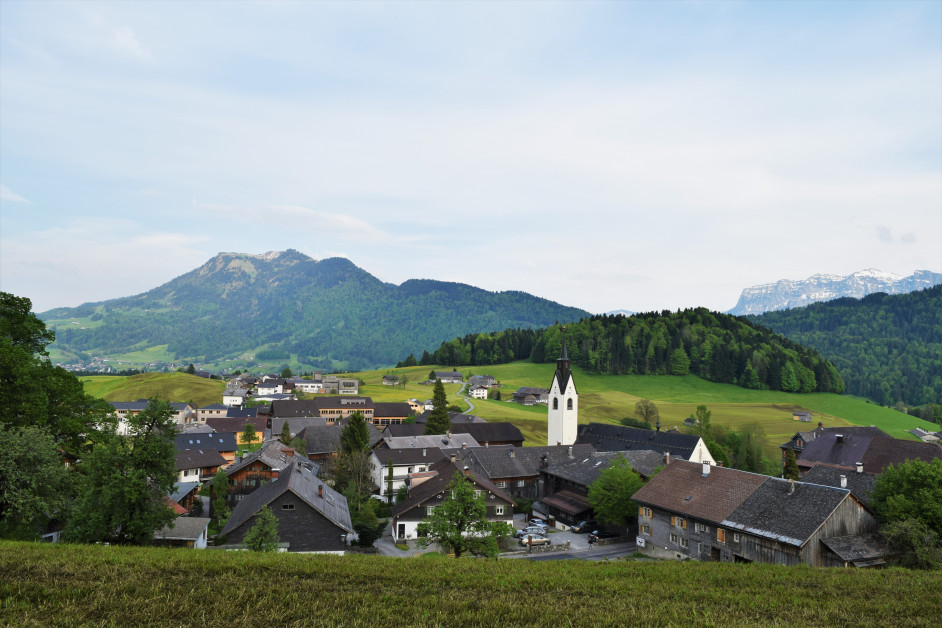
Since then, this event has grown into a month-long celebration of music, theatre and culture, and is one of the most anticipated performing arts events in Europe, starring the Seebühne, the world’s largest floating performance stage on the water of Lake Constance, which is kept on display throughout the year outside festival days.
And this is just the beginning of my love affair with Bregenz. Since attending the festival, I have returned again and again to relish what this small city and the surrounding nature has to offer.
Bregenz is the capital city of Vorarlberg, the westernmost state of Austria, bordering Germany, Switzerland and Liechtenstein by land and by lake. Fronted by Lake Constance and embraced by the Pfänder Mountain, the city has acquired a resort-like atmosphere and has become an attractive holiday spot for Austrians from the cities as well as Swiss and German visitors from across the borders.
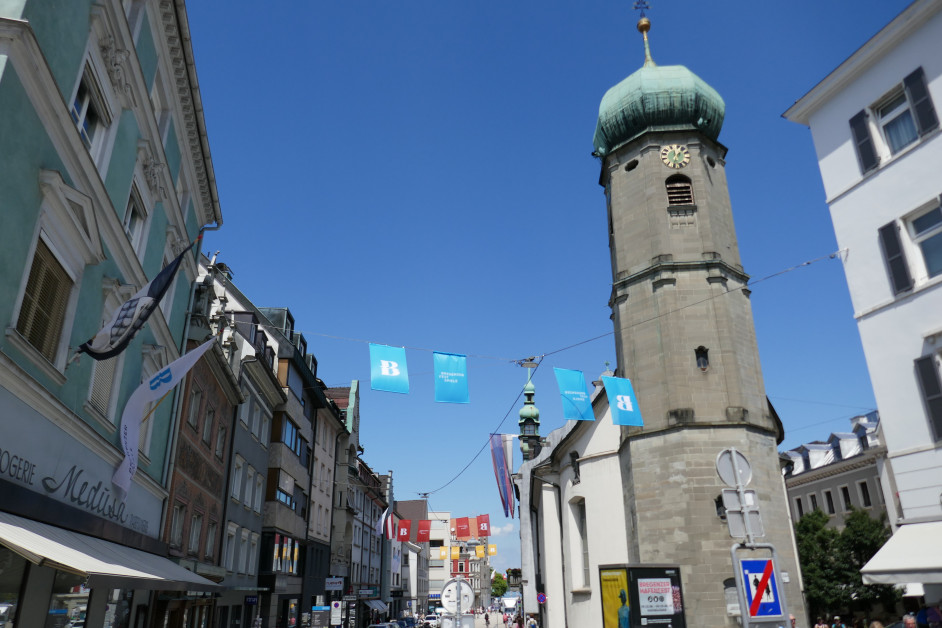
For this guide to Bregenzerwald I join a walking tour around the city to learn about its history and geography. The oldest part of town is Oberstadt (the ‘uppper city’), positioned on an elevated terrace away from the river, complete with fortified medieval town gates and stone walls embedded into the perimeter of the hills. Neatly stacked low-lying pastel-coloured houses and water fountains adorned with flowers make for a stark contrast with the modern Bregenz by the lakeside.
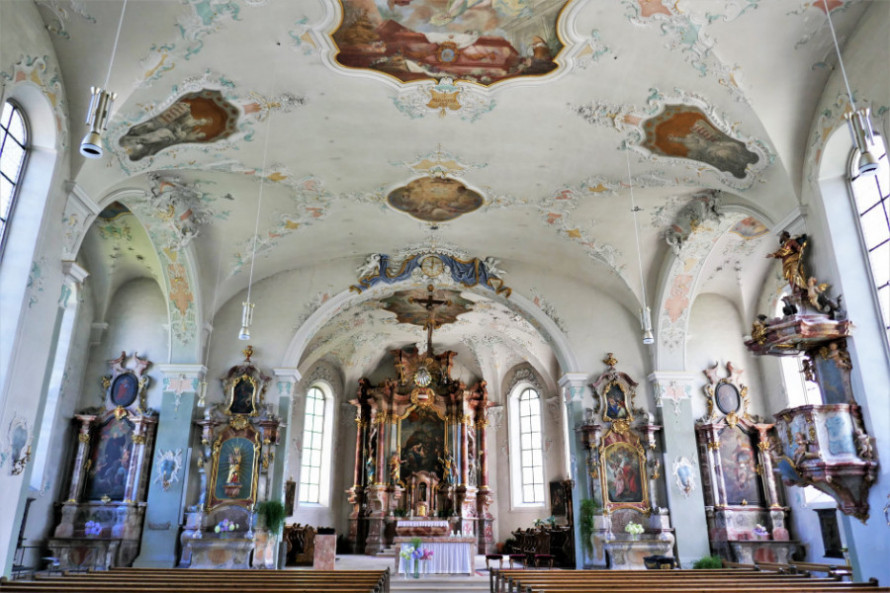
This is also where you’ll find the oldest church, St Gallus, then tracing the cobbled street further down the slope is the baroque dome of St Martin’s Tower, the symbol of Bregenz, piercing into the blue sky, with history inked into the walls of its Chapel in colourful frescos, which has cracked and faded over time.
Today’s town centre revolves around the lakefront, with its two eye-catching structures among its cityscape, the stunning minimalist designs of the Vorarlberg Museum and the Kunsthaus Bregenz. On a bright sunny day, the streets buzz with chatters from coffee shops, price wars between market stalls and the joyful laughter of children enjoying the shoreline boulevard. There is a fantastic walking and cycle path along the hem of the lake as well as opportunities to cruise and enjoy the stillness of Lake Constance.
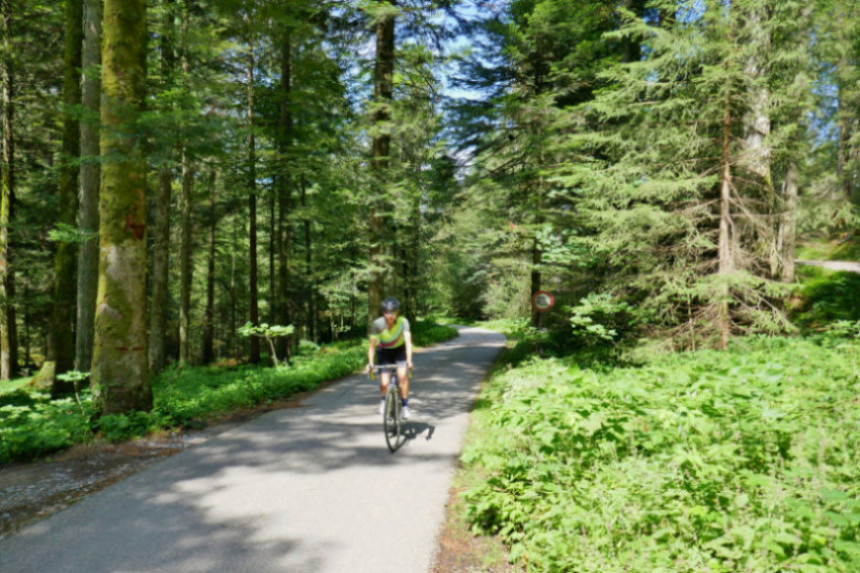
Speaking of cycle paths, I had heard that the ‘Vorarlbergers’ are particularly keen cyclists like myself, and the extensive cycle network is perfect for exploring outside the city’s boundaries. So, I talked the guide into giving me a tour around the Bregenzerwald (literally: Forests of Bregenz) on two wheels.
For a rural countryside, Bregenzerwald is surprisingly famous for its aesthetically pleasing architecture, including stylish barn-like houses and themed bus stops. In the village of Krumbach, the BUS:STOP Krumbach project was initiated as an attempt to encourage locals and visitors to use the bus services between the villages of Bregenzerwald. 7 architects from 7 different countries designed 7 different bus stops, which were built and crafted locally, that would inspire, and provoke dialogue among the community about the use of its public spaces and future of the traditional craftsmanship of the region.
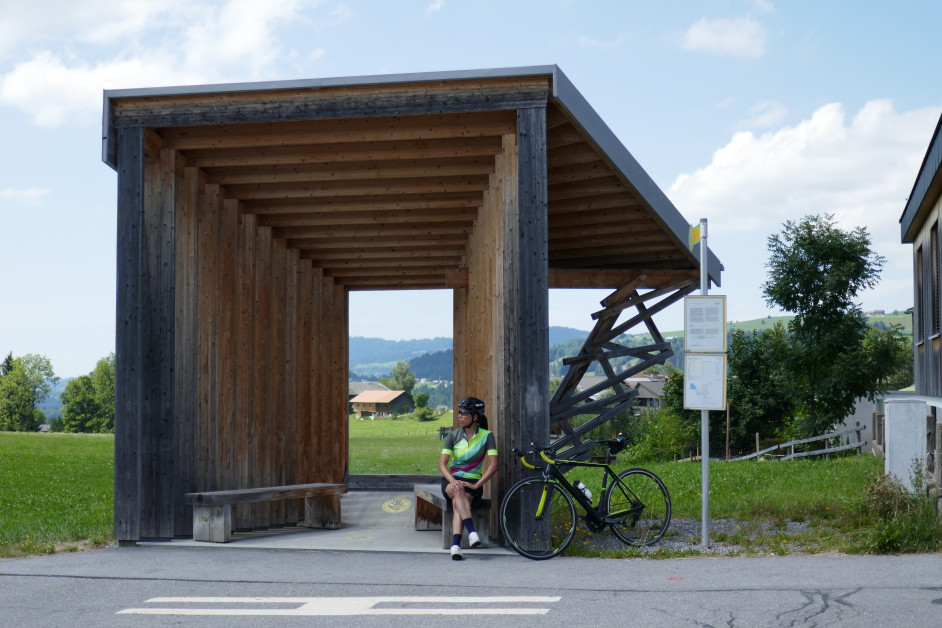
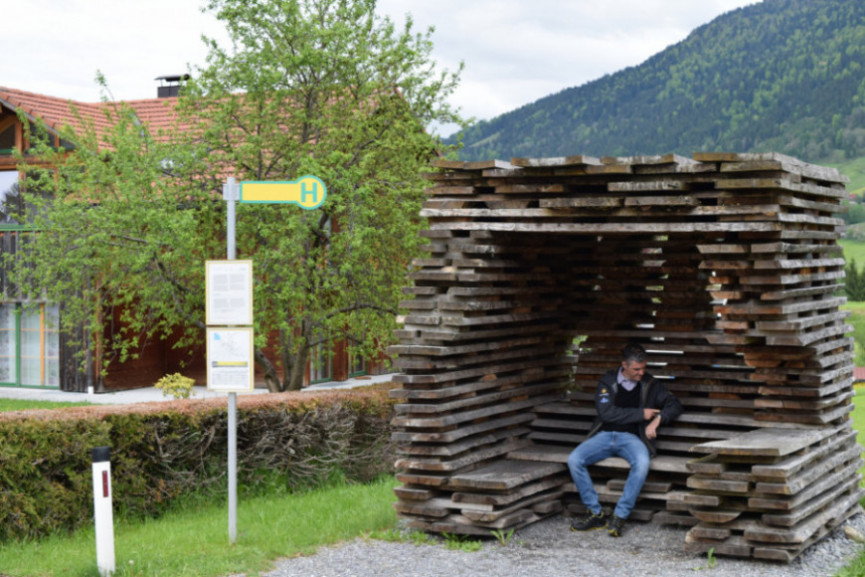
Another surprise is the bus network is in fact quite regular and has the capability of carrying bicycles on racks should a cyclist feel the need for a lift home.
Continuing on, up and down the green slopes of the valley, in and out of villages lined with houses covered in the traditional ‘fish scale’ cladding. We stop by Austria’s only women’s museum, Frauenmuseum, in a building that is designed as a multipurpose structure, so it is effectively shared with the local fire services. A few miles on, continuing the discovery of the architectural creatives of the valley, we stop by Werkraum in the village of Andelsbuch, which makes a great coffee stop after a day of cycling, as well as a chance to discover some of the local interior designs in its presentation space.
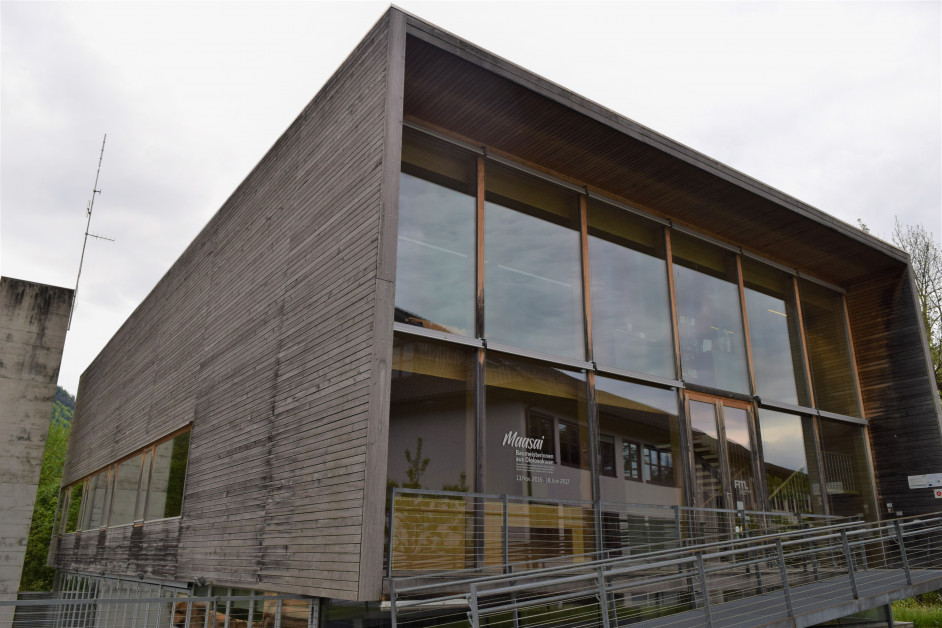
We pop into the Café Deli at Hotel Bären in the village of Mellau for a quick lunch. The hotel specialises in cycle touring accommodation and offers a wholesome menu for fit and active travellers. I get the idea that this is a destination where use of fresh local produce in its most natural form is highly regarded. The tourist office offers a ‘gourmet hiking’ packages as well, a self-guiding hiking tour that takes you from breakfast to lunch to afternoon tea, via the meadows and moors, through farmland and charming villages of Bregenzerwald.
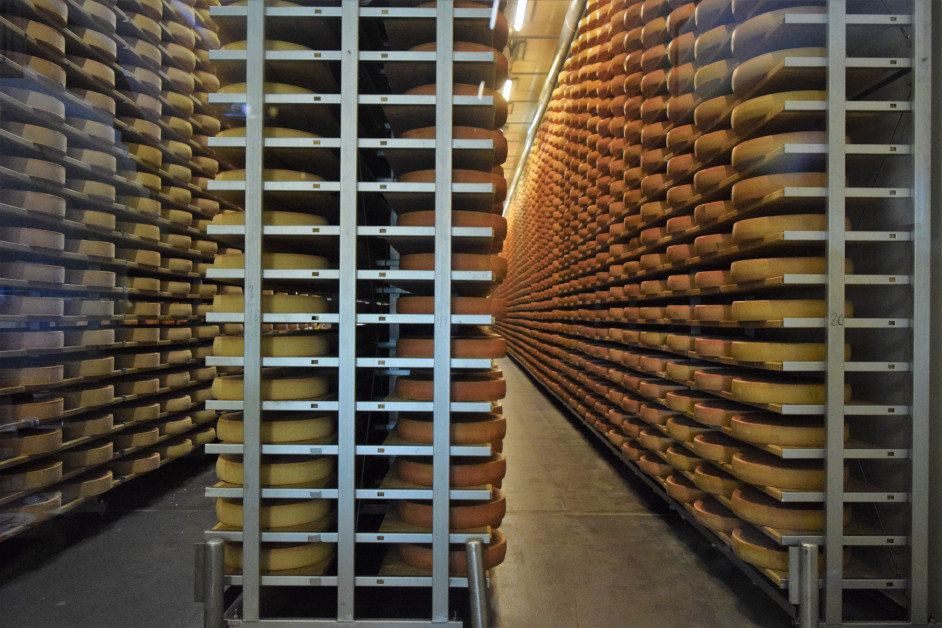
After visiting some of the most beautiful architecture, it is easy to forget that Bregenzerwald is in fact, still an agricultural land, and its cheese, the alpine mountain cheese, is locally known as ‘white gold, and on KäseStrasse Bregenzerwald (“Cheese Road Bregenzerwald”), one could visit a network of local farmers and cooperatives to learn all about the making of the cheese. Those who happen to visit outside opening hours can still get a chunk of cheese from the roadside vending machines at the farms, just another modern solution to help those who work in century-old traditions.
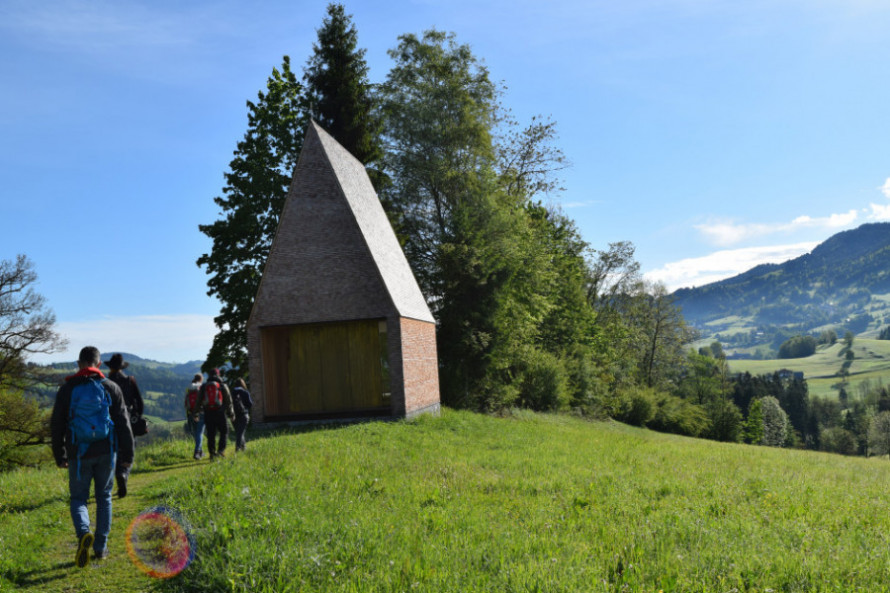
Having breathed in sufficient country air, I return to Bregenz for a much-deserved meal and wine on the lakefront restaurant Wirtshaus am See, with changing seasonal menus that also include a celebratory selection during festival time, I am told the fish from the lake is excellent, although I couldn’t resist more helpings of that excellent cheese. When you are around, do order the Käsknöpfle, a local sort of dumplings in cheese dish. It is the flavour of Bregenz and Bregenzerwald all in one pot.
All images (c) Amy McPherson
Tell Me More About this insider guide to Bregenzerwald
For more detailed information on this guide to Bregenz and Bregenzerwald visit Bregenzerwald Tourism
For more detailed information on the Cheese Road mentioned in this guide to Bregenzerwald visit KäseStrasse Bregenzerwald
The 2023 Bregenz festival will feature Madam Butterfly on the main floating stage as well as various events across Bregenz. For more information visit: Bregenzerfestspiel and Voralberg Travel.
Getting There
Closest international airport is Zurich for this guide to Bregenzerwald, and multiple airlines departing from various London airports have direct flights to Zurich. From Zurich Airport, take a direct EC train to Bregenz via St Gallen, with a journey time of 1 hour 20 mins and a ticket price of CHF 41. Buy tickets at SBB.CH
Car Hire
A week’s car hire from Zurich Airport cost around £420 with Avis
Where to Stay in Bregenz
Hotel am See is a four-star wellness hotel in the nearby village of Hard. The hotel is by the lakeside near the Rhine Delta nature reserve, the free bicycle hire is an excellent way to explore the surroundings. Bed and Breakfast rates start at €181 / £157 per night, per room for two people sharing. Book online.
Hotel Weisses Kreuz is an elegant four-star property right in the heart of Bregenz, with an excellent wine and beer bar. For reservation, email hotelweisseskreuz@kinz.at or phone +43 5574 49 88 0.
Where to Stay in Bregenzerwald
Hotel Bären, in the village of Mellau, is a welcoming boutique property for hikers and cyclists. Room and breakfast start at €70 per night, per room, per person. Seasonal promotions available. Book online, or call +43 5518 2207
Hotel Das Schiff in Hittisau, is luxury in the valley. Boasting an all-natural approach to both its spa and restaurant offerings, it is the hotel for those looking for a bit of quiet and tranquillity. Base rate on a half-board basis from €315, with multi-day discounts available. Book and enquiry online, or email info@schiff-hittisau.com
Other Information of Interest for this guide to Bregenzerwald
Bike hire is available at Radverleih Bregenz, also with e-bike options.
Werkraum in Andelsbuch is a great community space dedicated to the local interior designers and craftspeople, with a great café onsite.

